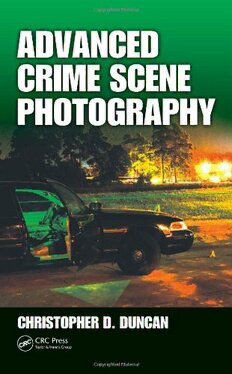
Advanced Crime Scene Photography PDF
333 Pages·2010·59.723 MB·English
Most books are stored in the elastic cloud where traffic is expensive. For this reason, we have a limit on daily download.
Preview Advanced Crime Scene Photography
Description:
The first pieces of evidence viewed by jurors are oftentimes the photographs recorded by the crime scene investigator. Professional and accurate photographic documentation is critical for creating lasting first impressions in the minds of a jury. Solving a range of photographic dilemmas and challenges, Advanced Crime Scene Photography assists investigators in creating photographic evidence that is engaging, interesting, and informative, giving them greater credibility when testifying in court. Beginning with a review of basic photography principles, the book seamlessly integrates this information with corresponding applications in crime scene photography. Mindful of cost-saving concerns in most law enforcement agencies, it provides useful tips on creating compelling photographic presentations on a limited budget using everyday items in lieu of expensive equipment. It demonstrates how to photograph images used in identification, including fingerprint, footwear, and tirewear impressions; tool and bite marks; and bloodstain patterns. It also explores specialized topics such as nighttime and low-light photography, flash photography, painting with light techniques, the photography of Luminol reactions, laser trajectories, and ultraviolet and infrared light photography. Thinking outside of the box, analyzing photographic challenges, and determining the best way to record a particular composition are all keys to the successful capture of photographic images that will leave a lasting impression with the viewer. Advanced Crime Scene Photography helps photographers work through difficult compositions and capture truly outstanding pieces of photographic evidence.
See more
The list of books you might like
Most books are stored in the elastic cloud where traffic is expensive. For this reason, we have a limit on daily download.
